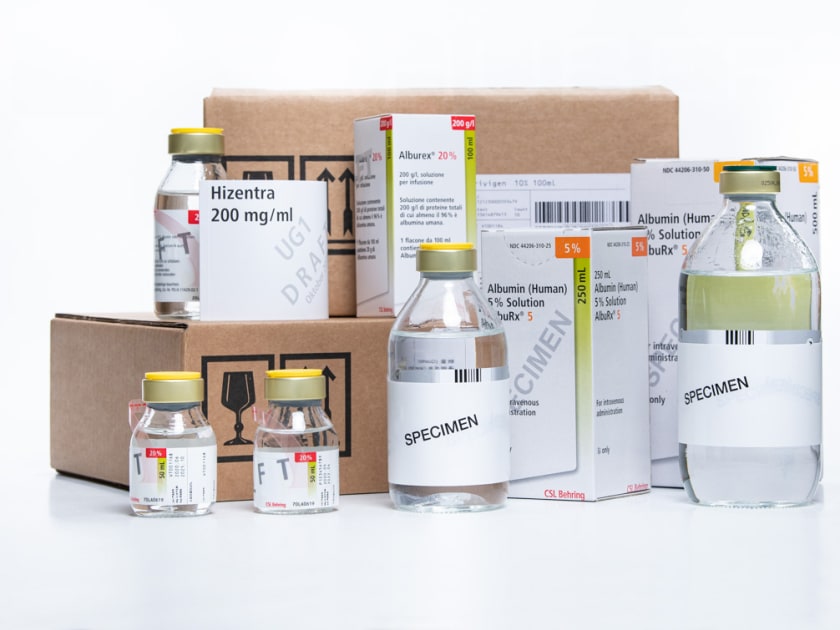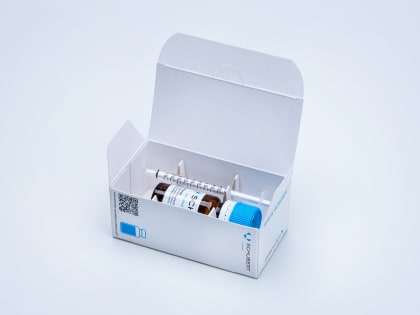Assembly and packing of combi-packs
- 12 machines form the overall packaging line
- Logical flow of individual functions ensures a stable packaging process
- Linking all control functions and data collection systems, taking into account the requirements of CFR Part 11
- Format changeover within 10 minutes
Requirements
Lean packaging for a slimming product
For a pharmaceutical manufacturer that produces a slimming product, Schubert-Pharma developed a complete line for multiple-component packaging with aesthetically attractive qualities.
The product was originally a prescription medication for weight loss. In many countries it has been sold for some time in weaker doses over the counter in supermarkets and pharmacies. When the FDA gave the green light for a launch on the US market, the manufacturer decided to increase its capacity. As well as increasing demand, creating an appealing image was also a key factor.
Solution
Engineering experts at work
As well as depalletising the upper and lower sections, tray placement and assembly, the turnkey project also included labelling, coding and packing with shrink-wrap. The twelve work stations are accompanied by final packaging, including palletising and pallet securing – automated throughout by Schubert-Pharma. Up to 100 kits are completed per minute, and format changeovers are carried out in ten minutes.
The experts at Schubert-Pharma organised individual functions into a logical flow, linking control functions, data generation and data processing together and coordinating them with each other. In operating practice, this continuously ensures a stable, perfect packaging process. As an example: when the user first opens the packaging, the lettering on the plastic bottle should be immediately legible. For this reason, before the container is placed in an alignment station, it is turned until the image processing system detects that the lettering is positioned correctly. The robot arm can then pick up and place the container into the tray in the required orientation.
The perfect presentation of the brand logo on the plastic bottles is ensured thanks to image processing checks.
Technical Details
Assembling a user-friendly combi-pack
The tray is first placed in the forming section and then filled: the daily dose containers are automatically separated and transported to the picker station’s image processing system. The leaflet is inserted before the plastic bottles, which reach their picker station standing upright. Before transfer, they are laid horizontally – for perfect sales presentation, the bottles are turned by two rollers until the image processing system detects that the brand logo is correctly aligned. The booklet is then inserted and the tray is closed with a lid.
At the next station, labels are placed at defined positions on the top and bottom of the trays. Correct orientation is important in ensuring the perfect sales presentation, and also guarantees that the printed barcode can always be found in exactly the same spot. An image processing system checks this and rejects any defective packaging. The trays are then film-wrapped.
Finally, the cartons are erected and placed in the shipping carton. In the palletising zone, these are arranged in several layers on the pallets. The pallets, which are secured with shrink-wrap, then leave the line.
- The line creates and packs up to 100 kits per minute
- Assembly and packaging line consists of 12 machines
- The line is currently designed for two different formats: a starter kit with 75 ml bottles or as a refill pack (150 ml bottles)
- Comprehensive validation work (IQ and OQ guidelines)
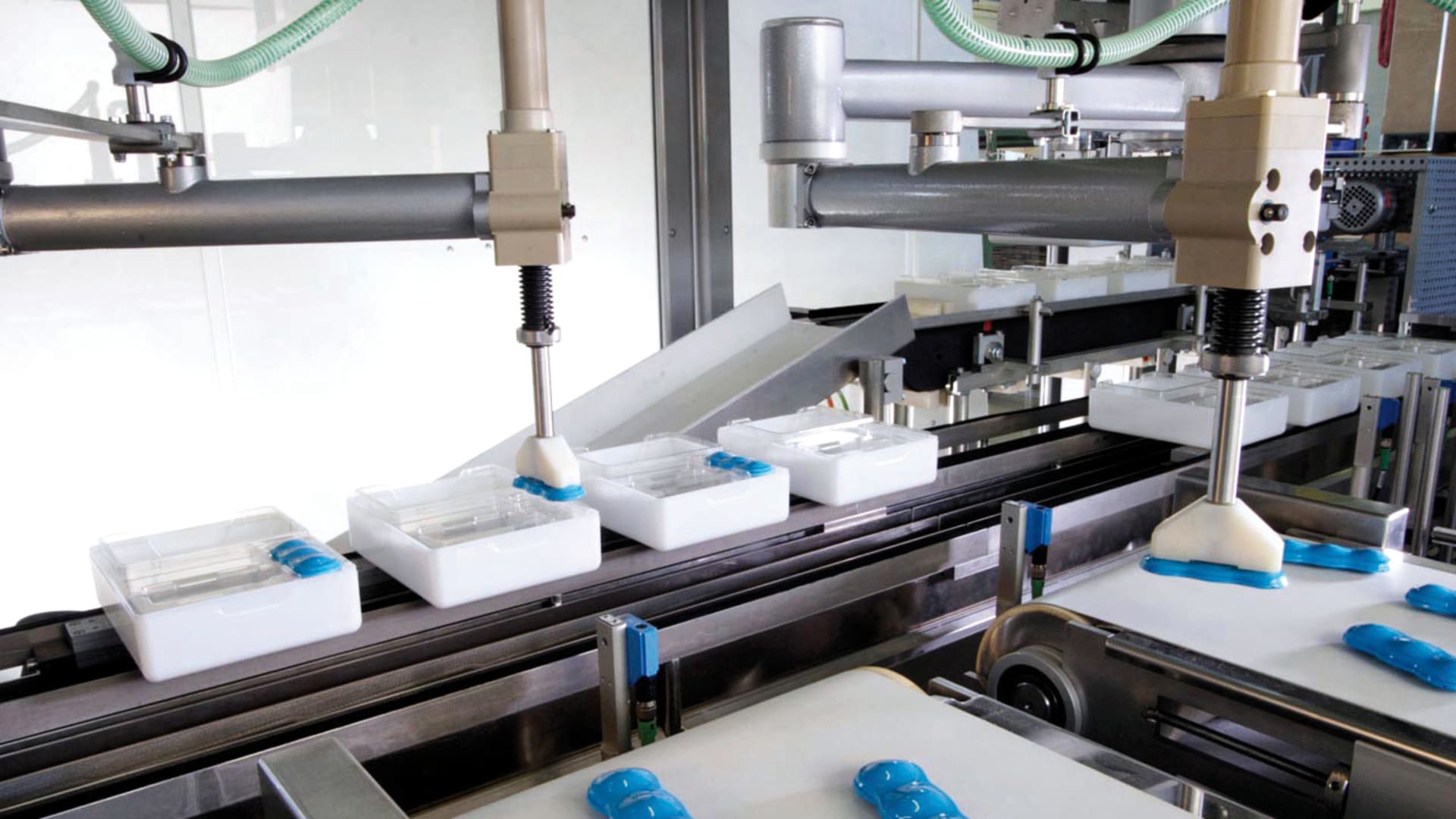
The daily dose containers are precisely positioned inside the kit using a scanner and robot.
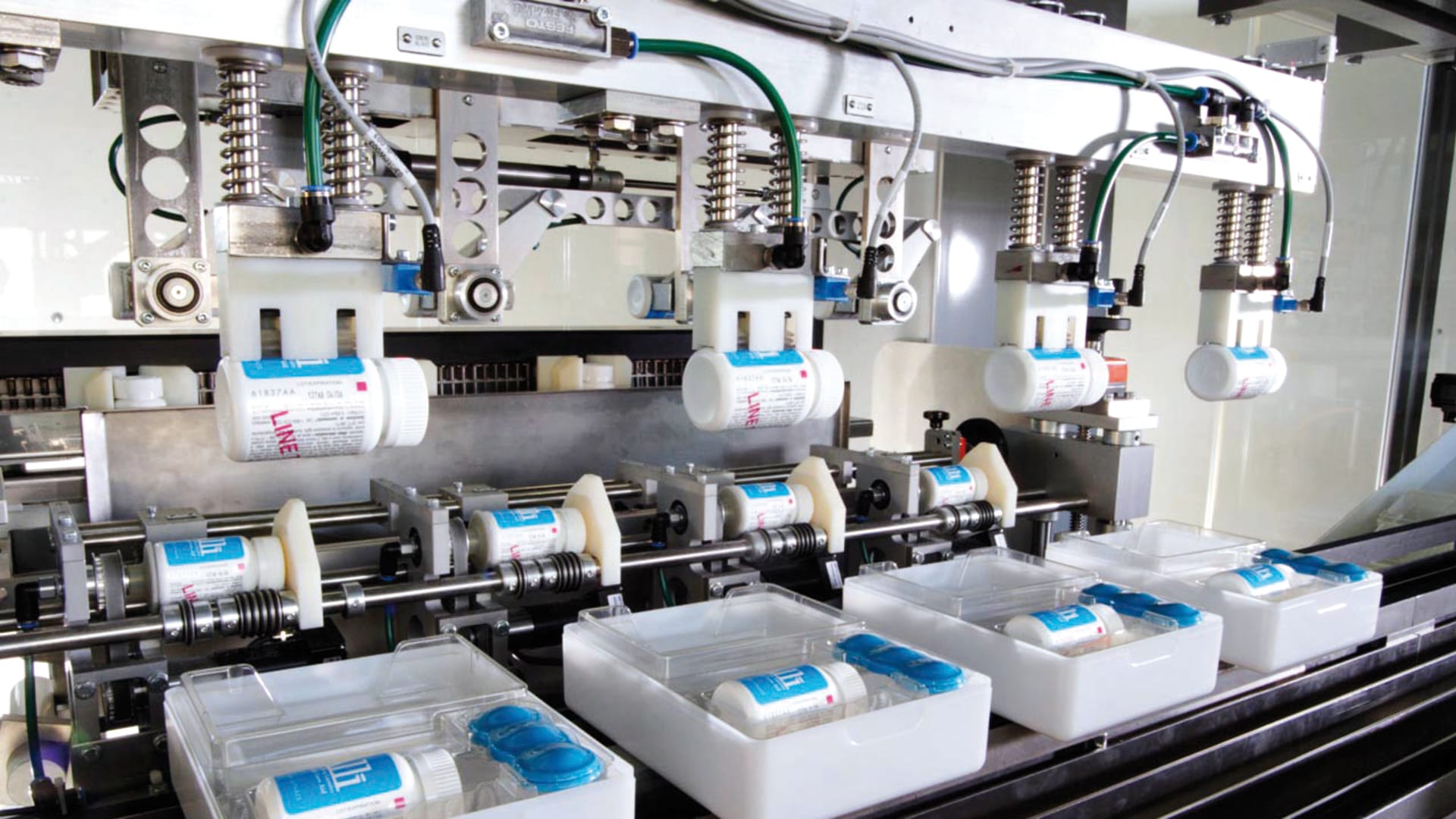
The filled and labelled bottles are fed online and grouped, the orientation is aligned according to the label and they are placed into the fitments.

The booklets are taken from a transport box and temporarily stored at an intermediate position. From this position the booklets are then accurately placed into the combi kit. The purpose of the intermediate storage position is to allow the bulk transport box of booklets to be replenished without any loss in machine performance.
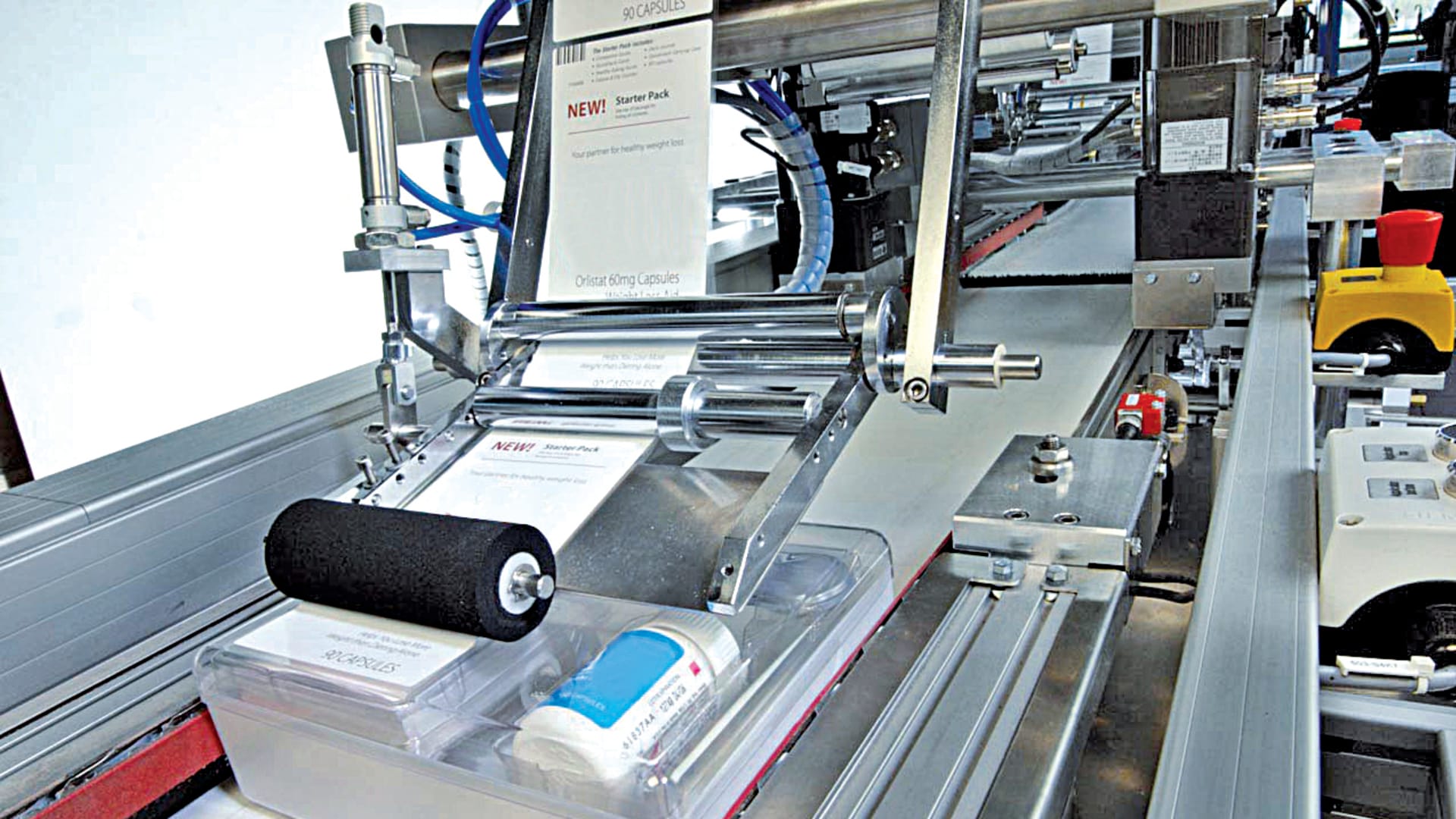
The top and bottom labels are aligned correctly.
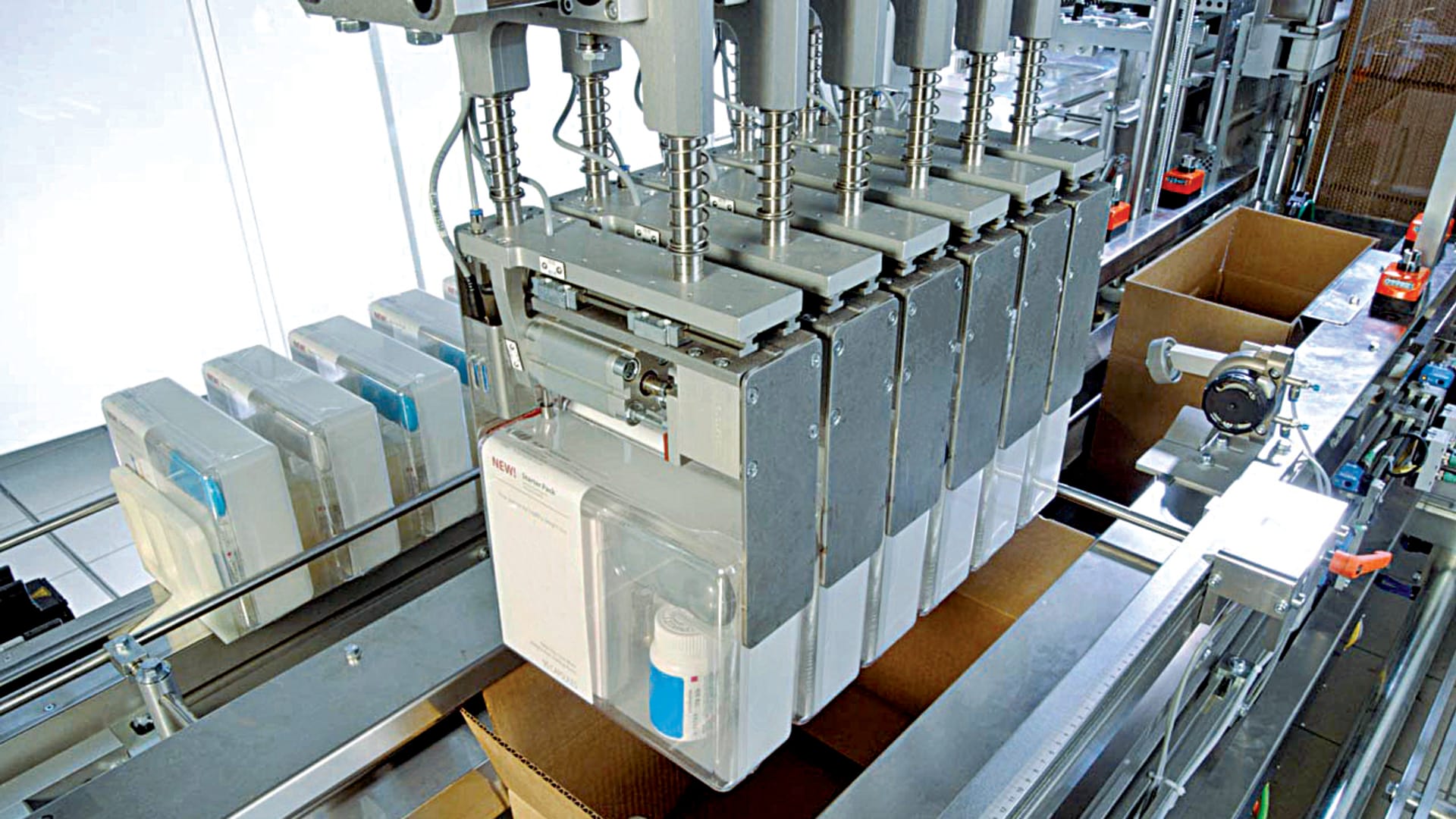
The units, which are secured with shrink-wrap, are grouped and placed into an outer case, which has been aligned in Advance.
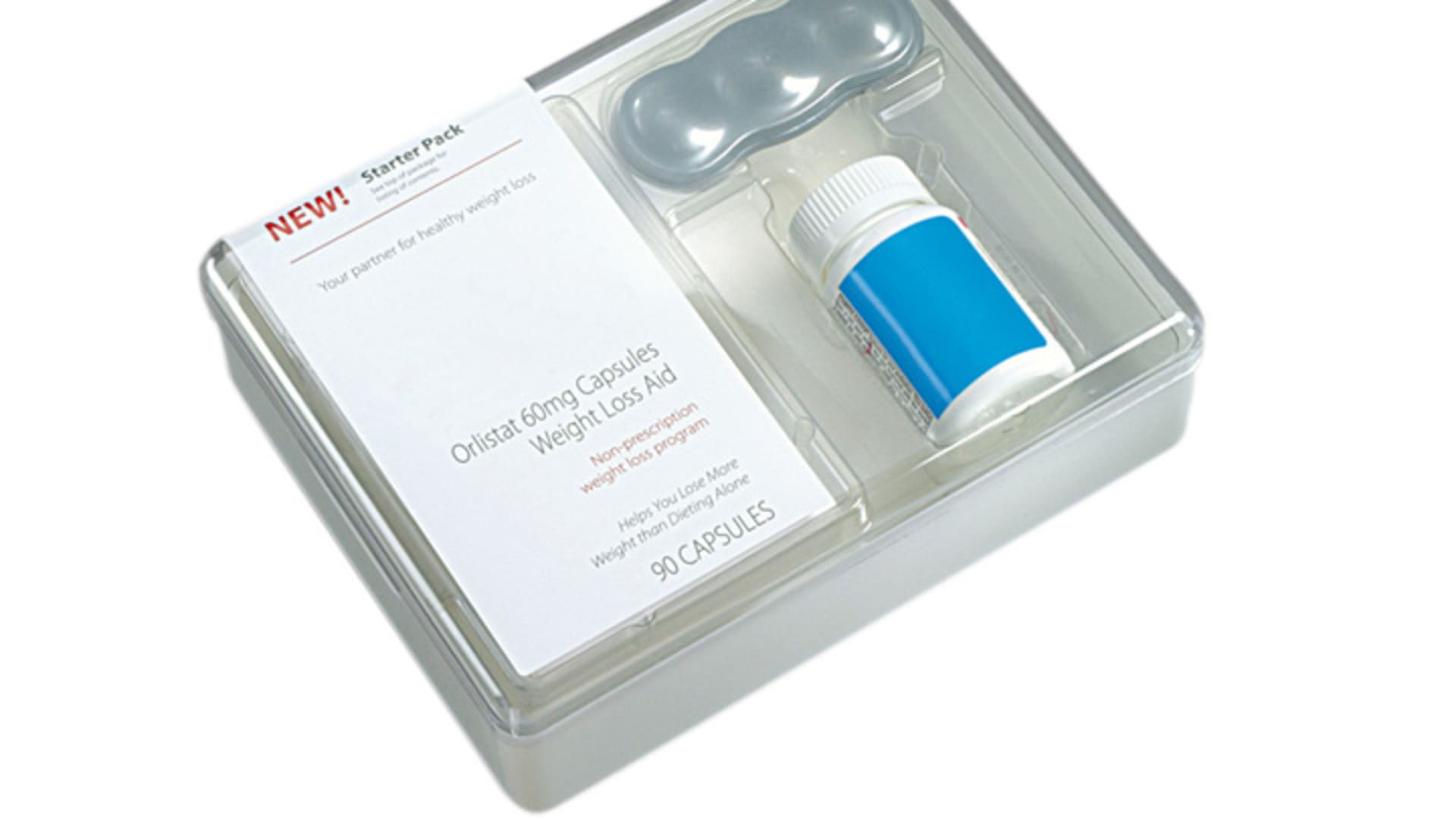
Combi-pack: a primary packaged product, a booklet, a leaflet, a container for the daily dose.



